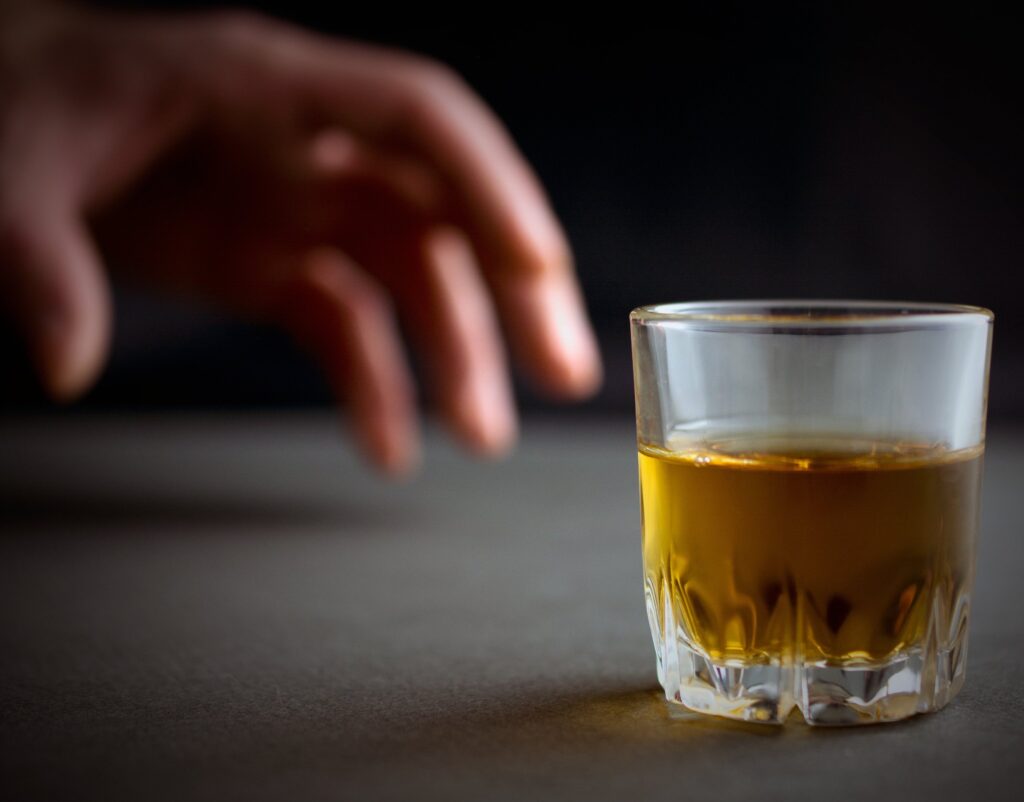 For those that know me, they will generally know of my total opposition to alcohol consumption and its regular use as a recreational drug. For almost 40 years now I have made statements that have raised eyebrows and made people think I was crazy. It’s cost me friendships and not something I’ve ever taken lightly. I’ve probably read more about the effects of alcohol on the body and brain than 99.9% of the population. My opinions are strong and sometimes unintentionally offensive, (especially to drinkers who quickly get defensive), yet all of them are based on the science, studies, and professionals who research the most common psychoactive drug used worldwide. It’s my opinion that most people have been easily brainwashed into our drinking culture will little to no thoughts of its harmful effects, and been encouraged to partake in the adolescent “rite of passage” of alcohol experimentation at a time in their brain development when the substance is its most addictive. It’s hard to convince people of anything these days that they won’t let themselves believe; even in the face of the strongest evidence. I can only hope for those that stumble upon this post that the data presented is at least a little compelling in moving the reader to consider pouring their favourite drug down the drain for good.
For those that know me, they will generally know of my total opposition to alcohol consumption and its regular use as a recreational drug. For almost 40 years now I have made statements that have raised eyebrows and made people think I was crazy. It’s cost me friendships and not something I’ve ever taken lightly. I’ve probably read more about the effects of alcohol on the body and brain than 99.9% of the population. My opinions are strong and sometimes unintentionally offensive, (especially to drinkers who quickly get defensive), yet all of them are based on the science, studies, and professionals who research the most common psychoactive drug used worldwide. It’s my opinion that most people have been easily brainwashed into our drinking culture will little to no thoughts of its harmful effects, and been encouraged to partake in the adolescent “rite of passage” of alcohol experimentation at a time in their brain development when the substance is its most addictive. It’s hard to convince people of anything these days that they won’t let themselves believe; even in the face of the strongest evidence. I can only hope for those that stumble upon this post that the data presented is at least a little compelling in moving the reader to consider pouring their favourite drug down the drain for good.
I recently watched Dr. Andrew Huberman’s podcast on alcohol. Huberman is a neurobiologist and runs The Huberman Lab in the School of Medicine at Stanford University. This podcast was quite revealing and certain things he said about alcohol shocked me. He relies only on the latest data and science. For anyone interested in this issue, this is one of the best, most thorough talks I’ve ever heard on the issue and it gets quite in depth on the destructive nature of alcohol on the brain and body. It is well worth your time, and was the motivation to finally finish this post that I’ve started, what seems like, countless times.
Alcohol is a liquid. It is medically classified as a toxin. It is its’ properties as a poison that causes drunkenness; ie. the state of drunkenness is a literal poisoning of the brain when the alcohol (acetaldehyde) crosses the blood/brain barrier. The horrible aches and feelings of a hangover the next day is the process of purging the last remnants of alcohol from the body, very similar to drug withdrawal. Alcohol is a depressant, which, after its brief euphoria phase produces long lasting feelings of depression, anxiety, and mood swings; as long as 7-10 days after an evening of just 4 or more drinks. Eight ounces of pure alcohol will kill you almost immediately. Humans have learned to masquerade its taste with fruity flavours, glamourize its appearance with vibrant colours, and market it with names that make us long for one after another, all in the name of “a good time.” Every single alcohol commercial markets their product as the only essential ingredient for a fun night out on the town, when nothing could be further from the truth. The lies of both omission and commission by the alcohol industry, along with a high level of propaganda, have fooled almost everyone into believing this drug is nearly harmless.
The majority of humans are self-destructive creatures. From drugs, alcohol, sugar, processed foods, social media, porn, etc., very few can properly regulate their desires and often choose short-term destructive pleasures over their long-term well-being. There is no question there is an addiction crisis in affluent nations around the world with easy access to all these things that do us harm. Most drinkers are surprised to learn that alcohol is one of the most addictive substances on the planet. In lists of addictive drugs, alcohol ranks anywhere from second to fifth depending upon the methodology used; usually ranking only behind heroin and cocaine. People cannot believe it is considered more addictive than meth or barbiturates. For example, on the Henningfield and Benowitz scales, alcohol ranks 2nd behind heroin yet higher than cocaine for its ability to addict its users. The US based Addiction Center also ranks it 2nd. Another medical rehab center ranks it 3rd. The Pathfinder Recovery Center ranks it 4th. There is just no question that there is a strong addictive pull to alcohol, and even among casual drinkers who are not alcoholics, there is a milder draw towards it outside of their control, especially in social settings.
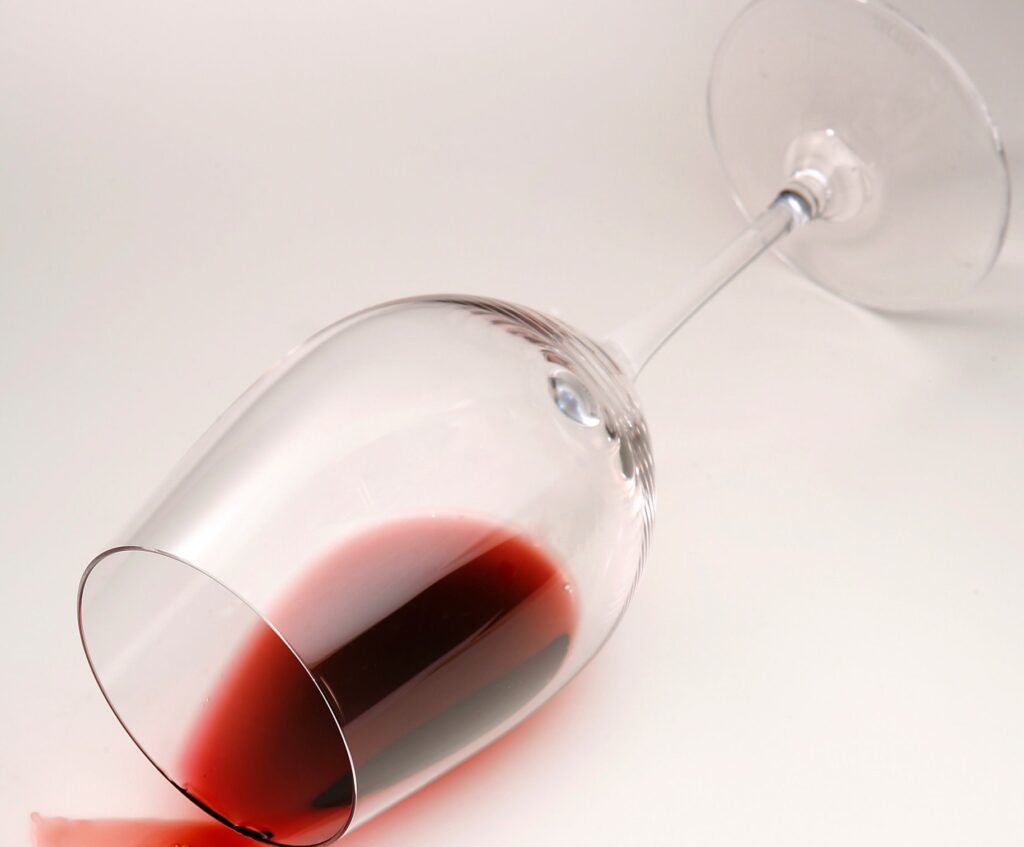 Alcohol is a leading cause of death worldwide. Nearly 3 million people die every year from alcohol consumption. In 2019, alcohol-impaired driving fatalities accounted for 10,142 deaths (28% of overall driving fatalities; 28 per day in the US). 1,500 students die every year on American college campuses from alcohol poisoning and other alcohol related incidents. On those same campuses, about 50% of the 97,000 sexual assaults that happen every year involve alcohol (43% of victims and 69% of perpetrators). A staggering 86% of homicides and 60% of all sexual abuse and rape cases are under the influence of this drug. Alcohol is directly linked to cancer and greatly increases cancer risk in even moderate drinkers. Even minimal drinking is associated with a higher risk of cancer. Alcohol is a direct cause of 7 types of cancer and the rise in female breast cancer over the past few decades is directly correlated with the rise in female alcohol consumption, which in times past was mostly the domain of men. It was linked to 740,000 new cases of cancer in 2020 alone. There are many other health problems that come from drinking alcohol besides just cancer. We know it contributes to liver disease, stomach and digestive problems, high blood pressure, heart disease, iron deficiencies, and a weakening of the immune system. Alcohol slows metabolism, changes the way your body stores energy from food, and reduces muscle protein synthesis. It’s comical to think about the hours people will spend in the gym “for their health,” only to turn around and consume alcohol a couple nights a week and compromise their health. It’s safe to say that vanity, not health, is the motivator in those hours spent at the gym. There is no such thing as a “healthy partier,” no matter how many squats or pushups they do. All recent studies have confirmed this: there is no safe level of alcohol consumption when it comes to your health. Zero is best, and moderate to heavy drinking will most certainly shorten your life. Alcohol consumption ages you faster and weathers your appearance.
Alcohol is a leading cause of death worldwide. Nearly 3 million people die every year from alcohol consumption. In 2019, alcohol-impaired driving fatalities accounted for 10,142 deaths (28% of overall driving fatalities; 28 per day in the US). 1,500 students die every year on American college campuses from alcohol poisoning and other alcohol related incidents. On those same campuses, about 50% of the 97,000 sexual assaults that happen every year involve alcohol (43% of victims and 69% of perpetrators). A staggering 86% of homicides and 60% of all sexual abuse and rape cases are under the influence of this drug. Alcohol is directly linked to cancer and greatly increases cancer risk in even moderate drinkers. Even minimal drinking is associated with a higher risk of cancer. Alcohol is a direct cause of 7 types of cancer and the rise in female breast cancer over the past few decades is directly correlated with the rise in female alcohol consumption, which in times past was mostly the domain of men. It was linked to 740,000 new cases of cancer in 2020 alone. There are many other health problems that come from drinking alcohol besides just cancer. We know it contributes to liver disease, stomach and digestive problems, high blood pressure, heart disease, iron deficiencies, and a weakening of the immune system. Alcohol slows metabolism, changes the way your body stores energy from food, and reduces muscle protein synthesis. It’s comical to think about the hours people will spend in the gym “for their health,” only to turn around and consume alcohol a couple nights a week and compromise their health. It’s safe to say that vanity, not health, is the motivator in those hours spent at the gym. There is no such thing as a “healthy partier,” no matter how many squats or pushups they do. All recent studies have confirmed this: there is no safe level of alcohol consumption when it comes to your health. Zero is best, and moderate to heavy drinking will most certainly shorten your life. Alcohol consumption ages you faster and weathers your appearance.
From the data we know that 1 in 8 adults, almost 13%, are alcoholics and it appears that between 15%-20% of the population have some sort of alcohol use disorder (AUD). (When you consider that only about 60% of adults are “drinkers”, that equates to 30-35% of all drinkers having a problematic relationship with their booze). It is estimated that 33% of all adults will suffer from an AUD at some point in their life. These are staggering numbers. Look around at your next party. If it’s a party of 20 people we know statistically that 3-5 of them have a problem with alcohol; even more if they are all drinking. Yet we have made the ingestion of this drug a “harmless” social norm. Would you do meth or cocaine with your friends and help feed that addiction? Of course not. So why do we casually participate in parties with friends where excessive drinking is not only normal but encouraged, and help to lead some of them down the path of addiction? People don’t like to hear it, but they are complicit in both their own, and their friends, drinking problems. The American Addiction Center describes the addictive effects of alcohol this way:
Alcohol acts on dopamine levels to enhance mood, like other drugs, but it also serves as a central nervous system depressant, slowing down nerve firings and the functions of the central nervous system. This results in lowered blood pressure and heart rate. It also promotes sedation and impairs motor skills and cognition. When people are under the influence of alcohol, they are likely to engage in risky behaviours as inhibitions are lowered. They may also be more talkative and sociable, and may experience mood swings and impaired decision-making and impulse-control abilities.
Alcohol abuse, especially when alcohol is consumed in heavy or binge drinking patterns, can lead to a dependency on the substance. When alcohol begins to leave the body, withdrawal symptoms can range from mild to life-threatening. When the effects of alcohol wear off, the brain may try to restore a chemical balance, causing a kind of rebound of some of the nerve firings that were suppressed by the alcohol. Anxiety, depression, insomnia, tremors, sweating, irregular heart rate, hypertension, nausea and vomiting, headaches, abdominal pain, and even psychosis and seizures are potential alcohol withdrawal symptoms. A desire to keep these symptoms to a minimum may lead to using alcohol as a form of self-medication for alcohol withdrawal and can therefore perpetuate alcohol addiction.
 Heavy drinkers, even while building their tolerance to alcohol in the short-term, can have noticeable impairments to brain function years later. This explodes the notion that many falsely believe: that once a tolerance to alcohol is built up, its negative effects are no longer worrisome. Even moderate alcohol intake can reduce the brain’s ability to produce new cells by 40% and this causes long term memory problems as the production of new cells in the hippocampus is greatly reduced. Regular alcohol consumption will most certainly deteriorate brain function over time.
Heavy drinkers, even while building their tolerance to alcohol in the short-term, can have noticeable impairments to brain function years later. This explodes the notion that many falsely believe: that once a tolerance to alcohol is built up, its negative effects are no longer worrisome. Even moderate alcohol intake can reduce the brain’s ability to produce new cells by 40% and this causes long term memory problems as the production of new cells in the hippocampus is greatly reduced. Regular alcohol consumption will most certainly deteriorate brain function over time.
Binge drinking, the most common form of alcohol consumption, is associated with increased mortality and morbidity, and findings indicate that even a single alcohol binge results in increased serum endotoxin levels which in turn leads to greater levels of depression. Women had higher elevated endotoxin levels in their blood after a binge than men did, and perhaps this is one reason we see higher levels of depression in women as well. Women tend to use alcohol to self-medicate for immediate relief of anxiety and depression when in fact it exacerbates these problems they are seeking relief from, leading to a greater number of functional alcoholics who rely on its effects to cope with life. While we are on the topic of female consumption, it is worth noting that alcohol use by women is accelerating rapidly and of deep concern to health authorities here in Canada. Binge drinking by childless women has doubled. (I’ll let the reader draw their own conclusions from that). Women face greater risks in consuming alcohol than men do and female drinking is reaching troubling levels. No matter how you look at it, the news is not good.

The mental and physical toll of drinking on the brain cannot be understated. We know that alcohol is linked to brain damage. Alcohol and its affects on the brain are many. Heavy drinking can change your DNA to facilitate further heavy drinking which leads to alcoholism over time. Even moderate alcohol consumption can damage the brain. Heavy drinkers have the lowest IQ. (Study is here). The biggest risk factor for dementia later in life is alcohol consumption, which is avoidable. (Another article here). Alcohol intake leads to a thinner cerebral cortex which is the area of the brain that supports higher-level cognition. Almost every study shows that there is no safe level of alcohol consumption that is beneficial for proper brain health.
Most people downplay their consumption and think they can easily handle their alcohol. More people would be surprised to find they are classified as heavy drinkers rather than just a casual imbiber. What constitutes a heavy drinker? Well for females, 8 or more drinks per week and 15 or more for males would make one a heavy drinker; and at an alarming risk for an AUD. The CDC has reported that 10% of all deaths between the ages of 20 and 64 are due to excessive alcohol consumption. Alcohol and excessive consumption is a far bigger societal problem than most people would guess. This article does a good job of breaking down consumption habits by decile. It’s refreshing to see that the bottom 40% of the population consume almost no alcohol at all which should be encouraging for those who drink because of peer pressure, to fit in, to be one of the “cool kids”, for social status, or any number of other reasons.
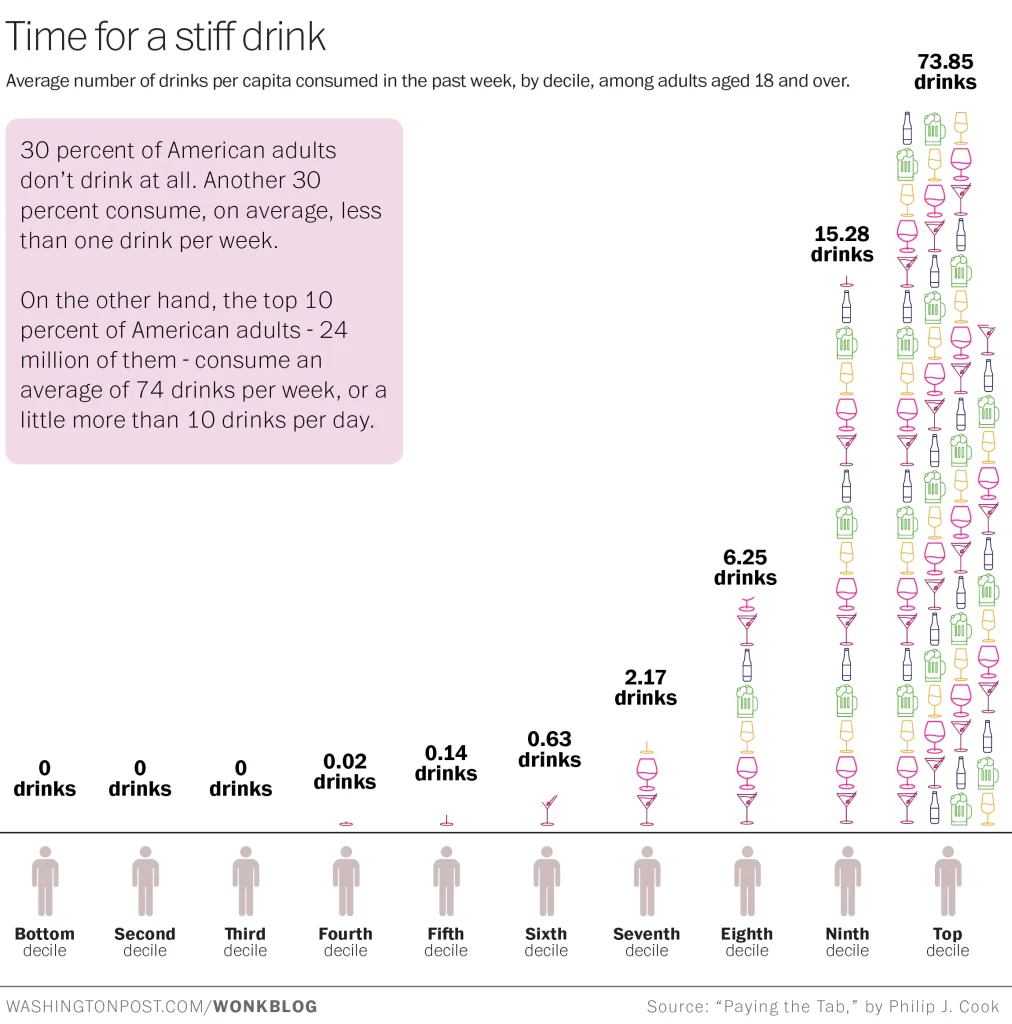
Look, I understand the arguments for drinking that people use, but none of them are compelling when put up against the clear risk data. Every single one amounts to opting for short-term pleasure and temporary “good feelings” at the expense of one’s mental and physical health. This is the trade-off that every single hard drug user makes as well. This is the hard reality; this is the science.
If you need a drink at the the end of a hard day; you have a drinking problem. If you need a drink to have a good time with friends; you have a drinking problem. If you can’t go out without drinking; you have a drinking problem. If you need a drink to feel normal; you have a drinking problem. If you need a drink to help you mask or alleviate emotional pain; you have a drinking problem. If you need a drink to escape the difficulties of life; you have a drinking problem. Some of these are understandable, but most are not. People use substances every day for “fun,” or to self-medicate, or to lessen anxiety, or to forget. I’m not unsympathetic to those who are hurting or trying to forget a trauma, but a substance is never the answer. Alcohol has never once solved a problem, but it has, on countless occasions, created them. It has created pain, grief, sorrow, anger, and embarrassment. The reliance on alcohol has caused so many people to unwittingly become slaves to a substance; a substance that ruins lives.
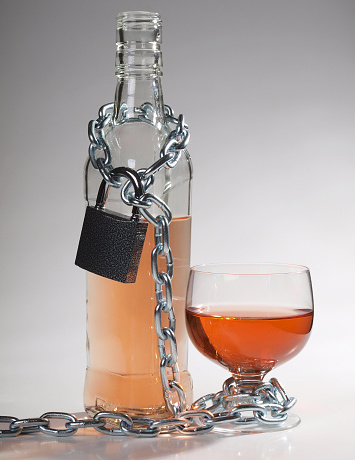 Ultimately, alcohol is used by the weak; those who need a crutch, those who can’t cope or produce on their own. They drink because their life is missing something they think they will find in the bottom of a bottle. They can’t produce happiness on their own. They can’t produce confidence on their own. They can’t produce contentment on their own. They can’t have “fun” in a sober state. So they turn to a drug to produce the feelings that they cannot, rather than do the hard work of improving themselves and that which is necessary to construct a full, fun-filled life. There are no shortcuts. Alcohol is not a shortcut. It produces the illusion of happiness, of fun, of confidence, of sexiness; only to leave those who rely on it worse off when its temporary, fleeting effects wear off. The continued reliance on a substance in order to find peace or fulfillment or happiness or whatever an empty soul is yearning to find, will ultimately render its user subservient to its addictive power.
Ultimately, alcohol is used by the weak; those who need a crutch, those who can’t cope or produce on their own. They drink because their life is missing something they think they will find in the bottom of a bottle. They can’t produce happiness on their own. They can’t produce confidence on their own. They can’t produce contentment on their own. They can’t have “fun” in a sober state. So they turn to a drug to produce the feelings that they cannot, rather than do the hard work of improving themselves and that which is necessary to construct a full, fun-filled life. There are no shortcuts. Alcohol is not a shortcut. It produces the illusion of happiness, of fun, of confidence, of sexiness; only to leave those who rely on it worse off when its temporary, fleeting effects wear off. The continued reliance on a substance in order to find peace or fulfillment or happiness or whatever an empty soul is yearning to find, will ultimately render its user subservient to its addictive power.
Society at large suffers from a spiritual problem. There is a lack of meaning and purpose in the modern, aimless life, which causes it to distract itself with pleasure and consumption. A night out drinking helps to cauterize their hollow feelings. Alcohol creates these fake and transient pleasures as a way of escape from this empty reality. People have little meaning or purpose so they chase after superficial, ungratifying pleasures which leaves them unfulfilled, depressed, and lonely. They lack the tools to cope so they seek solace in a substance who’s only promise is to give them more of the emptiness and pain that they are running from. They yearn for human connection through the social use of alcohol, but fail to understand that meaningful human connections can never be built through drunkenness, and your soulmate will never be found passed out at the end of a bar at 2am. We substitute real connections for fake, substance-induced interactions for fear of being vulnerable and real. Booze gives them the safe barrier to hide behind. Drinking is drug use, and as much as people decry this description, factually and scientifically it is.
Society has a drug problem and alcohol is the most common drug of choice. 70% of Americans are on meds. 25% of people over 18 take something for their mental health. There were 300 million prescriptions for antidepressants written in 2021 in the US; many of those for people who spend their weekends drinking a depressant and wondering why they are moody and down most of their waking sober time. We need to fix this. We need to encourage people to find the joy in a sober life without wasting it in dingy bars and slowly killing themselves in the process. We need to stop drugging ourselves to death and look to seek meaning and fulfillment outside the “easy fix” of a drug that can provide neither. I understand why people drink because most people bow to peer pressure and are followers. “Drinking is a social thing” is the great justification they use to follow the crowd. We need to encourage people to be strong, to be individuals, to strive for personal strength of conviction, and to search for greater meaning for their lives. We should seek out those things that are good, beautiful, and true; and do away with those things that are destructive and unhealthy. True freedom only comes when we pursue a totally authentic and sober life, experiencing people and the world in all its beautiful reality, while putting away the childishness and immaturity of trying to create this artificially through the use of alcohol and other substances. We will be stronger for it if we do.
No matter how dark it may get, and it will get darker than anyone ever plans it to get when they are mired in a reliance on the bottle, there is always hope. Light conquers darkness. Sobriety will always, always, always, be greater than the casual or serious enslavement of alcohol.
Karl Marx once called religion the “opiate of the masses,” meaning that religion served as the “drug” to stupefy and dull the people. In our modern day, alcohol serves the same purpose, leaving people and society all the poorer and dysfunctional for it.
Post script:
1) There are few things more hilarious than watching “experts” sit around regaling one another with their thoughts on the merits of one wine over another or how their favourite “paint thinner,” otherwise known as whiskey, is better than another. Studies have shown that it is not objective, and primarily a psychological phenomenon of wanting to seem “cultured” or “sophisticated” or an expert. (Must read this, and this).
2) An excellent report on Canadian drinking habits. This covers almost every issue, some I didn’t have the time or space to mention.
3)

Notice Dr. Huberman’s purposeful use of the word “seem”. Alcohol creates the illusion of normal, the illusion of fun, the illusion of happiness. What it creates is fake and fleeting. We know this because when its effects wear off, the person is left in a worse state than they were before.
4)

Alcohol cannot bring happiness or contentment, only addiction. It takes work to create happiness and pleasure in your life and the alcohol shortcut is always a poor trade of easy instant gratification for the long term consequences of disease and/or addiction.
5)
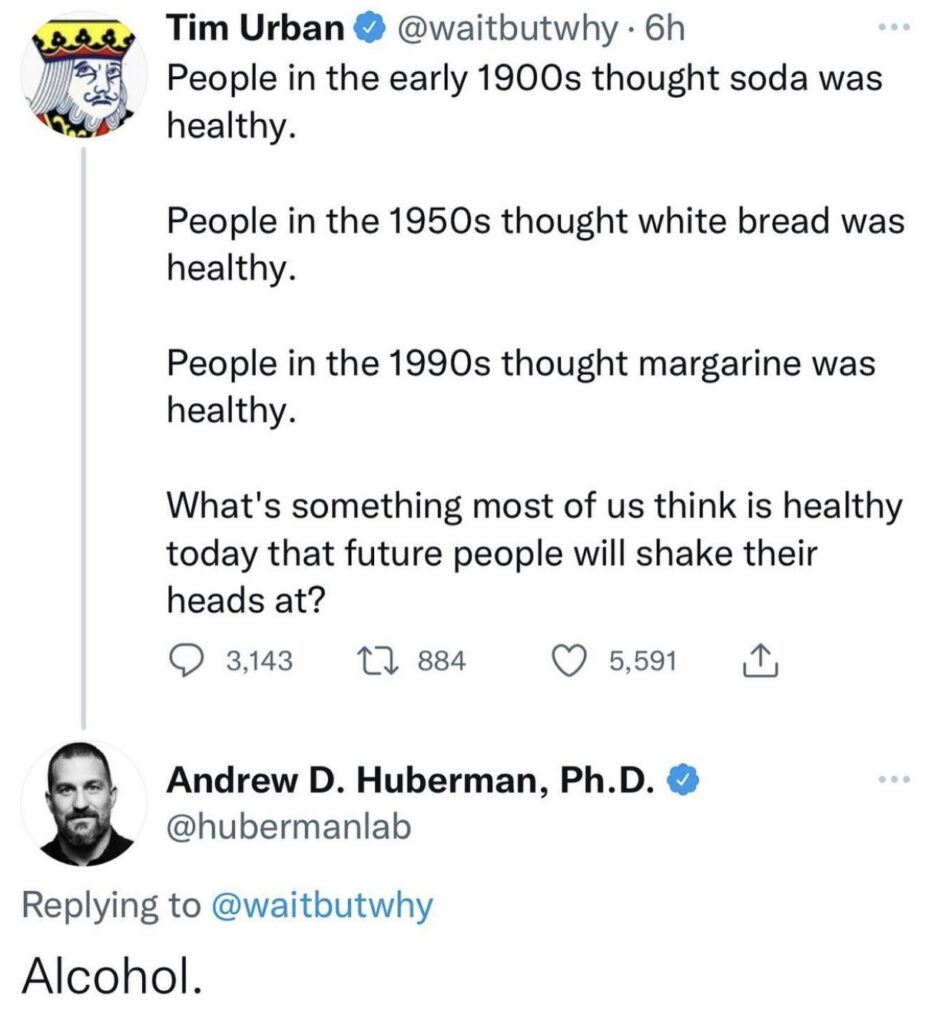

Pingback: Alcohol And The Ignorance Of A Drug-Addled Age | dbro